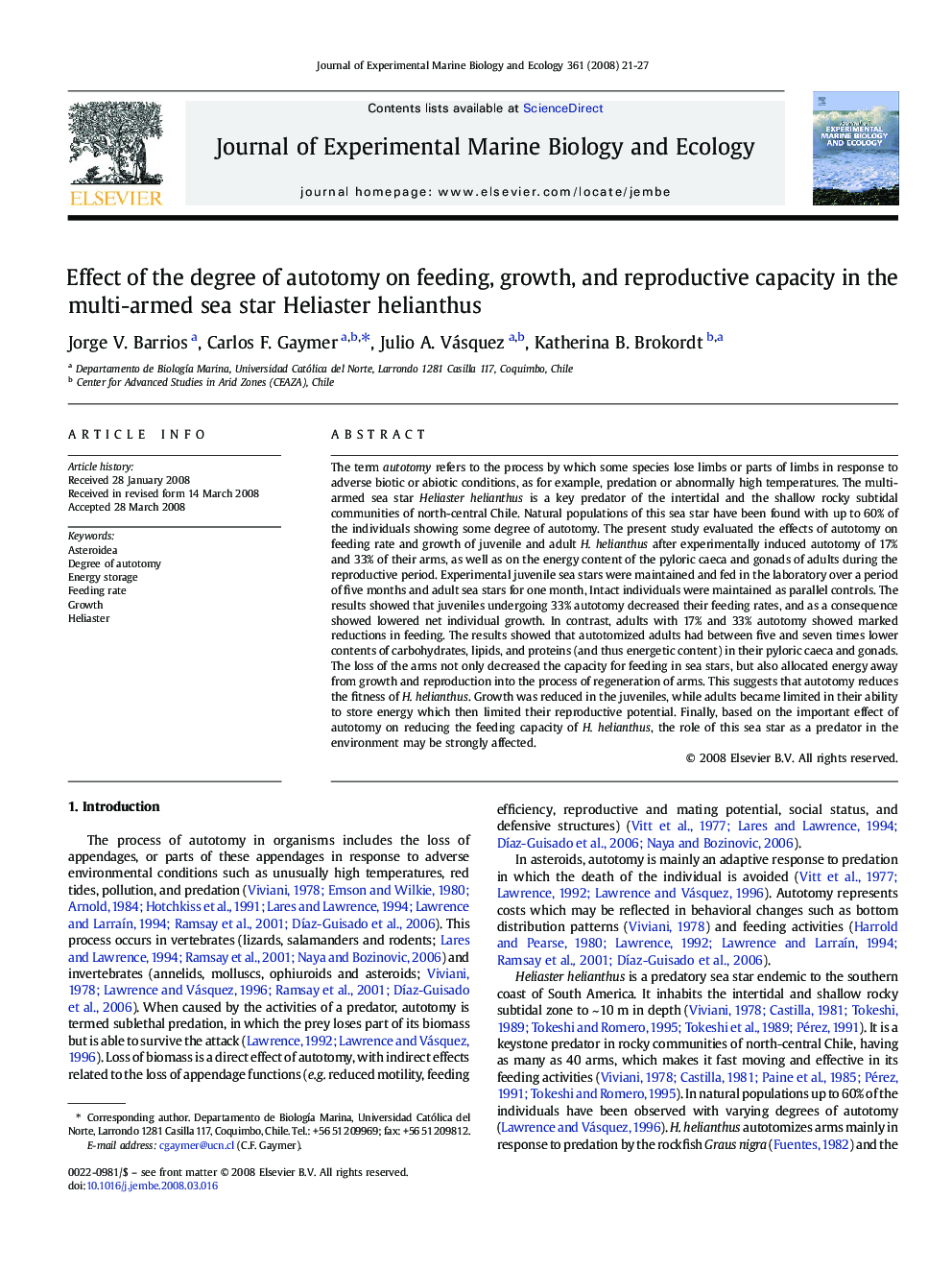| کد مقاله | کد نشریه | سال انتشار | مقاله انگلیسی | نسخه تمام متن |
|---|---|---|---|---|
| 4397263 | 1305875 | 2008 | 7 صفحه PDF | دانلود رایگان |

The term autotomy refers to the process by which some species lose limbs or parts of limbs in response to adverse biotic or abiotic conditions, as for example, predation or abnormally high temperatures. The multi-armed sea star Heliaster helianthus is a key predator of the intertidal and the shallow rocky subtidal communities of north-central Chile. Natural populations of this sea star have been found with up to 60% of the individuals showing some degree of autotomy. The present study evaluated the effects of autotomy on feeding rate and growth of juvenile and adult H. helianthus after experimentally induced autotomy of 17% and 33% of their arms, as well as on the energy content of the pyloric caeca and gonads of adults during the reproductive period. Experimental juvenile sea stars were maintained and fed in the laboratory over a period of five months and adult sea stars for one month, Intact individuals were maintained as parallel controls. The results showed that juveniles undergoing 33% autotomy decreased their feeding rates, and as a consequence showed lowered net individual growth. In contrast, adults with 17% and 33% autotomy showed marked reductions in feeding. The results showed that autotomized adults had between five and seven times lower contents of carbohydrates, lipids, and proteins (and thus energetic content) in their pyloric caeca and gonads. The loss of the arms not only decreased the capacity for feeding in sea stars, but also allocated energy away from growth and reproduction into the process of regeneration of arms. This suggests that autotomy reduces the fitness of H. helianthus. Growth was reduced in the juveniles, while adults became limited in their ability to store energy which then limited their reproductive potential. Finally, based on the important effect of autotomy on reducing the feeding capacity of H. helianthus, the role of this sea star as a predator in the environment may be strongly affected.
Journal: Journal of Experimental Marine Biology and Ecology - Volume 361, Issue 1, 20 June 2008, Pages 21–27